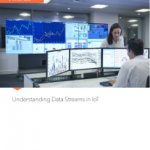In my last post, we examined the growing importance of event stream processing to predictive and prescriptive analytics. In the example we discussed, we looked at how all the event streams from point-of-sale systems from multiple retail locations are absorbed at a centralized point for analysis. Yet the beneficiaries of those analytic results are not limited to central administrators. Yes, it is true that real-time event data can influence enterprise-wide forecasting and planning. But in essence, the more immediate opportunities for value occur at the warehouses, the logistics managers and the retail sites – not at the hub, per se, but rather the edges.
This presents a slightly different model for event stream processing that layers the analyses based on the type of value that can be derived at different points in the networked enterprise. Streaming event data within the retail location can be analyzed for real-time restocking. Streaming event data across regional stores can help identify warehouse efficiencies and streamline regional inventory management. Streaming traffic and weather data within the region will help reduce delivery costs yet improve timely delivery. And accumulating all the data at the centralized location feeds forecasting and planning for the entire organization.

In this paradigm, event stream processing should not be limited to the centralized point. Rather, a hierarchy of the network should be modeled to identify two key concepts: where there is potential for benefits from localized analysis, and where that analysis can take place. I believe that in most scenarios, there will be sufficient computing power available at each level in the hierarchy for the event stream processing and analytics to be pushed to that level – even (and maybe especially) at the point of data generation itself.
This suggests that from a technology perspective there is value in integrating an event stream processing engine at every point in the enterprise network. And this brings us somewhat full-circle in relation to what I mentioned at the beginning of my previous post: The emerging value of the Internet of Things. This will be the topic of the my next (and third) post in this series.
